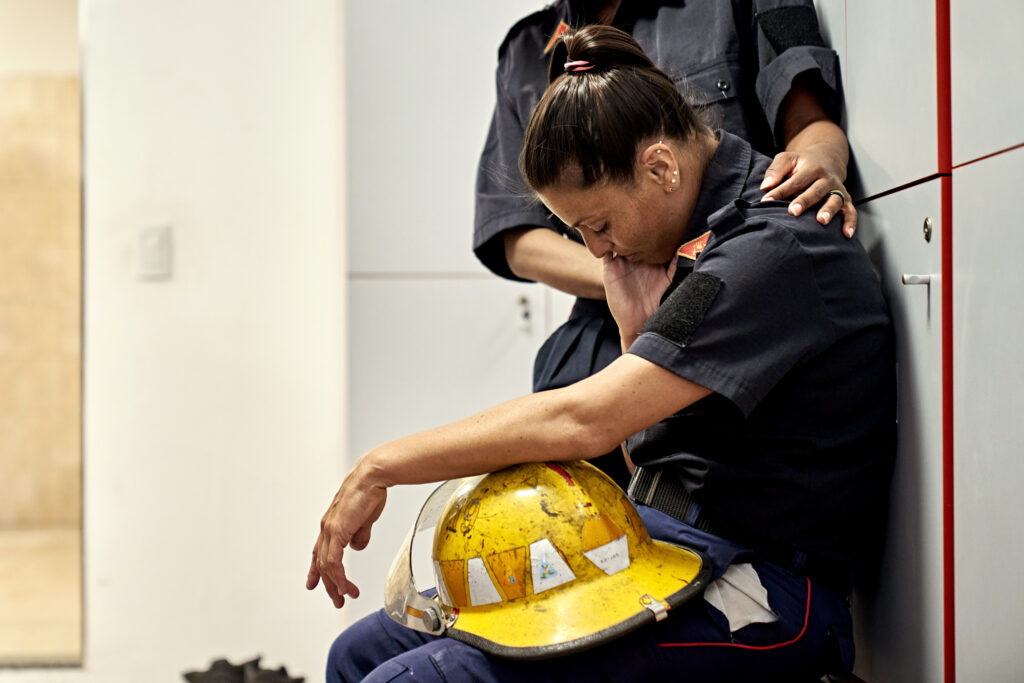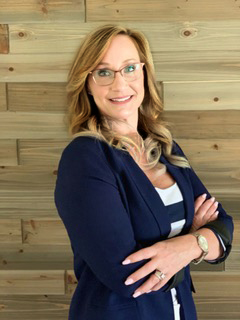
Transforming first responder health: From personal experience to professional expertise
By Brittani Schroeder
Features Wellness Photo credit: xavierarnau / Getty Images
Photo credit: xavierarnau / Getty Images Editor Brittani Schroeder recently had the opportunity to speak with Mynda Ohs, PhD, a former first responder and current psychologist, about psychological safety for fire service members.
Q: What prompted you to dive into the issue of the mental and physical health of first responders?
Ohs: I was a first responder for five years. During this time, I met my husband, a firefighter paramedic, who retired as a battalion chief. Our son is also a firefighter now.
I have earned an MA in School Counseling, an MS in Marriage and Family Therapy and a PhD in Psychology with an emphasis on family studies. When I graduated with my MS, I worked with children and adolescent patients. I then worked for the military as a civilian doing suicide prevention and then worked exclusively with first responders and their families.
Addressing and acknowledging the mental health complexities within our first responder community is new. It’s only been over the last 10 years that we’ve been discussing it and beginning to understand the vast effects this career has on the members.
Historically, we’ve focused on our military members, and everyone has accepted that there is inherent collateral emotional damage that can occur. However, our first responder community works daily with some of the worst possible incidents.
People call 911 on their worst days and look to the responders to show up and fix the problem. These members show up day after day and are expected to be “strong” because they’re our “heroes.” These titles pigeonhole members into appearing strong at all times and can create a stigma that mental health equals weakness, and the sufferer can’t perform their duties accurately. Members “suck it up” until their trauma catches up with them.
Q: As a former first responder who is still in a first responder family, and as a psychologist, what are the challenges you see first responders face in their roles?

Photo: Mynda Ohs
Ohs: There are many challenges, including struggling to transition from the “work” brain to the “home” brain, regulating emotions and being able to engage emotionally with their families, sleeping, dealing with the images in their head and the addictions they use to numb themselves. I think out of all of these, it’s the work/home brain that is the biggest issue.
When a first responder shows up for work, their work brain turns on, and through muscle memory, they shift into an adrenaline-filled, hyper-vigilant, energetic, and non-emotional version of fight-or-flight. While this is required to survive in a firefighter’s career, the larger issue is that it takes 12 to 18 hours for our bodies to get out of the work brain.
When first responders return home, their families might not understand that they’re still experiencing the work brain, and they might take the critical, emotionally absent persona as a reflection on them. Because of the hyper-vigilance, they walk in the door and notice everything immediately. I have joked that when my husband comes home from a shift, he notices the one thing I didn’t do rather than the 100 things I did.
Of course, the calls they attend and the trauma they have seen follow them around, and many won’t ask for help. When I was a first responder, my partner would tell me not to cry in front of anyone because I was a woman, and I shouldn’t want anyone to think that I couldn’t handle the job. Women struggle because they must work hard to be and appear tough – like they are not affected by what they see during emergencies. They’re also frequently accused of sleeping with male colleagues by their spouses, and this leads to being excluded from outside work activities, leaving them isolated.
Finally, a significant problem occurs when a first responder finally wants to get help and talk to someone but can’t find the right clinician. It’s important for first responders to talk to someone who is culturally competent and understands the job’s demands. This is a key component that can make or break the success of therapy.
Q: What kind of support should first responders receive after a traumatic event?
Ohs: Jeff Mitchell, who is the creator of the critical incident debriefs and the International Critical Incident Stress Foundation (ICISF), has done research and found that the sooner a first responder receives some support—hopefully within 24 to 48 hours of a traumatic incident—the greater the reduction of needing long-term therapy.
Peer support members and clinicians are trained to provide various services depending on the incident and the need. I have responded to over 25 line-of-duty deaths in the United States and also to the Montecito Mudslides in 2018. I have provided debriefs, peer support, one-to-one counselling, and large-scale educational classes for over 3,000 personnel.
Providing the proper support may mean the difference between having zero worker’s comp. claims for PTSD, and several members out for the same reasons.
Q: How do you think first responder agencies can promote psychological safety in the workplace?
Ohs: I believe it starts with leadership support and encouragement. They should discuss their support of their members’ mental health and set aside a budget specifically for classes and training on mental resiliency.
Agencies should also build a support team that provides compensation, continuous support and training. Leaders could recommend members for this team, send them for training, and select a coordinator to lead the team and their responses. This team could also provide classes and support for the families of the first responders.
The next step would be to hire a culturally competent clinician if your team has the budget to have one in-house. Work with your union to provide mental health training regularly. Alternatively, if there is no budget for a dedicated clinician, you can recommend clinicians who understand the job’s demands. Go to meet the local service providers and discover who is the best fit. This way, a list of recommended referrals can be provided to members at any time.
Finally, you need to support your retirees as well. Create policies that will support your members as they prepare to leave the job and after they have gone. It may even be a good idea to have some retired members on the peer support team as well.
Q: When thinking of psychological safety and culture shifts, what do you hope for the future?
Ohs: My first hope is that all agencies take this seriously and their actions prove that seriousness. These actions would include setting aside money in the budget to provide the proper supports. This can’t just be a box that they check to say, yes, this is important, but then don’t do anything. All departments, including volunteer departments, should have a peer support team. A wellness program speaks volumes to your people.
Having culturally competent clinicians is also critical to success. In my experience, first responders will get irritated or “turned off” if the clinicians don’t understand the complexities of their job. First responders may also have trust issues, which prevent them from asking for help. Having a pre-vetted list at their disposal will help them get the support they need.